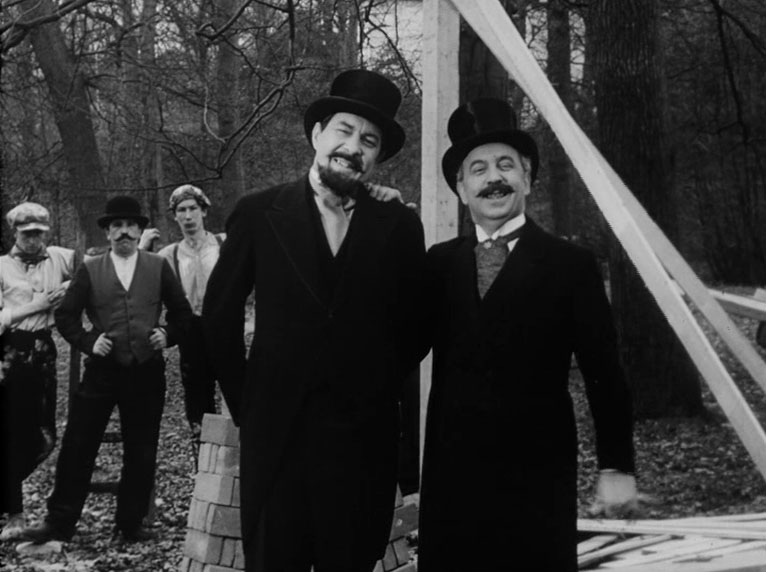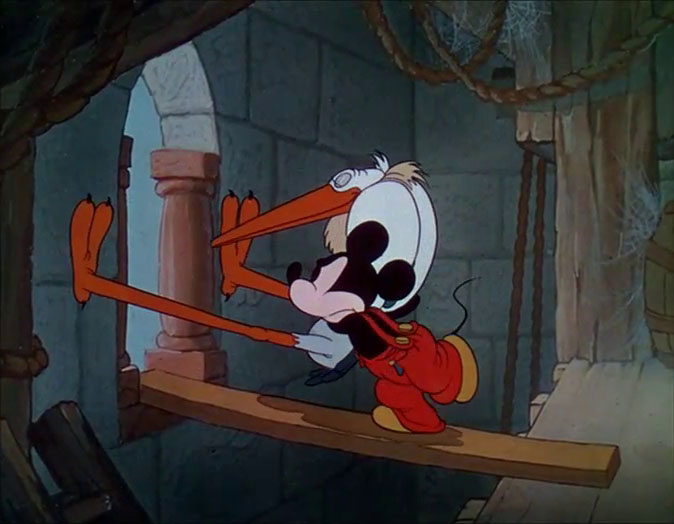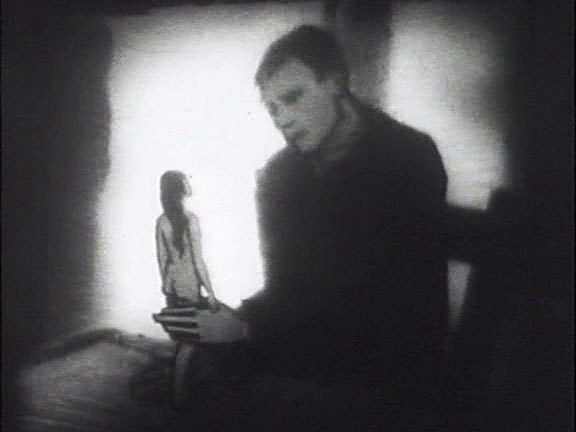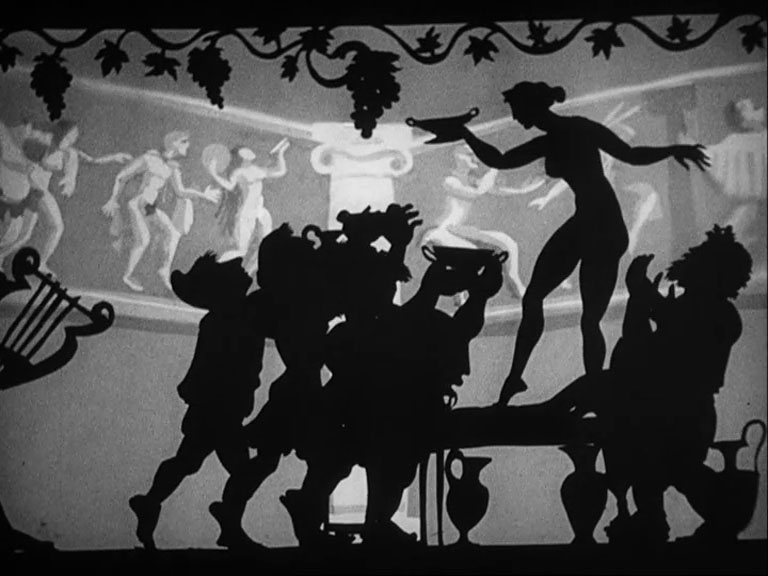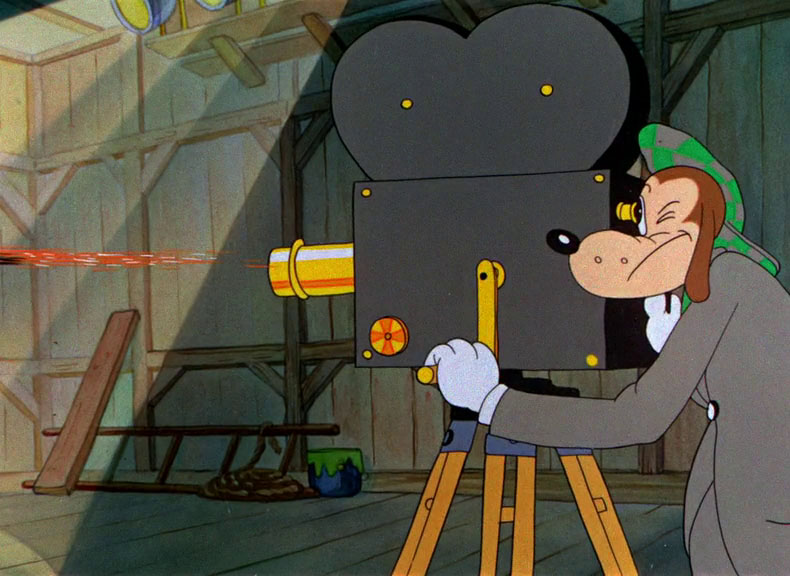Bead Game (1977, Ishu Patel)
Stop-motion beads create a series of creatures devouring each other until inevitably, as most animated films do, it becomes a cautionary tale about senseless human violence. Really impressive work, fast and complex, synched to a percussion soundtrack, and I don’t know how they got that 3D light effect in the final minute. Up for the oscar that The Sand Castle won.

–
Paradise (1984, Ishu Patel)
A completely different kind of thing, bright 2D animation, frames fading into each other to create a slow dreamy blur-motion on everything. All very bird focused. A black bird flies into a magic castle made of a million points of light and sees a human king and a parade of colorful exotic birds. Back in the real world he brutalizes all the local birds and flowers, stealing colors and patterns and props to make himself look prettier, does a crazy dance for the king who locks him outdoors in the cage of shame. After escaping, I guess he lives in harmony with his fellow wild birds. Lost the oscar to a shorter British thing I haven’t seen.


–
Labirynt (1963, Jan Lenica)
This is exciting since I’ve watched the Lenica & Borowczyk shorts but not any of his solo work. Man in a wingsuit descends into the city and hides from various beasties and sees different animal-based horrors. Surreal low-motion clip-art animation, full of birds and moths and traps. He’s finally captured, scanned and identified, rescued by his hat-bird, then shredded when he attempts to escape in the wingsuit. Verdict: cool. This won a prize at Annecy, where Borow also won for his Concert de M. et Mme. Kabal.


–
The Cameraman’s Revenge (1912, Wladyslaw Starewicz)
One-ups the Lenica by using actual dead bugs (with wire legs) as stop-motion puppets. A cheatin’ movie, a couple of beetles make out with other bugs and get caught. A jealous grasshopper films the husband with a hot dragonfly – including through their hotel keyhole – and projects it when the beetle couple go to the movies, causing a riot that ends with the beetles in jail. Robert Israel soundtrack on the now-rare DVD.

–
The Frogs Who Wanted a King (1922, Wladyslaw Starewicz)
Clay frogs, a hundred times more expressive than the insect cadavers. Fed up with democracy, the frogs pray to the gods to be sent a king. He sends them a stone idol and they get pissy, so he sends a stork which eats all the frogs it can find. An original Aesop fable (he sent a water snake instead of the stork).

–
Little Bird Gazouilly (1953, Wladyslaw Starewicz)
I can’t resist watching another bird short and catching Starewicz forty years later. It’s a beautiful one, adding camera movement to the complex stop-motion. Baby birds are born in the trees over the city, and the bulk of the story follows their first day in the human world, getting into hijinks. A bird gets mad at a mirror, just like my birds did earlier today. Wladyslaw had moved to France after 1917, and this film and many more were co-credited to his daughter Irene.


–
There Will Come Soft Rains (1984, Nazim Tulakhodzhayev)
Opens with an egg, but it’s not another bird movie, it’s a breakfast-making machine. The humans have disintegrated but the household automation carries on. The concept (by Ray Bradbury) and illustration is cool, but the animation is nothing much. Aha, it’s a bird movie after all, as a bird flies in the open window while the automation is celebrating the new year 2027, and the anti-intruder robot arm tears the house apart. It doesn’t end great for the bird either.

Symphonie Diagonale (1924, Viking Eggeling)
Patterns of curved and diagonal lines rhythmically shift and unmake themselves. Good modern soundtrack by Sue Harshe.

–
My Childhood Mystery Tree (2008, Natalia Mirzoyan)
A Russian kid whose main fear is that hawks will steal his teddy bear has an intricate dream of human-held cities of junk collectors atop a giant tree. After a dogged chase, he refuses to give up his bear when asked, leading to the collapse of their entire owl-bug society.

–
Kitty Kornered (1946, Robert Clampett)
Porky has too many cats, tries to put them out for the night but they revolt and take over the house. I like that the red-nosed cat’s whole personality was “the drunk one.” Their leader is a proto-Sylvester. A shadow-puppet dog and a martian invasion get involved.








